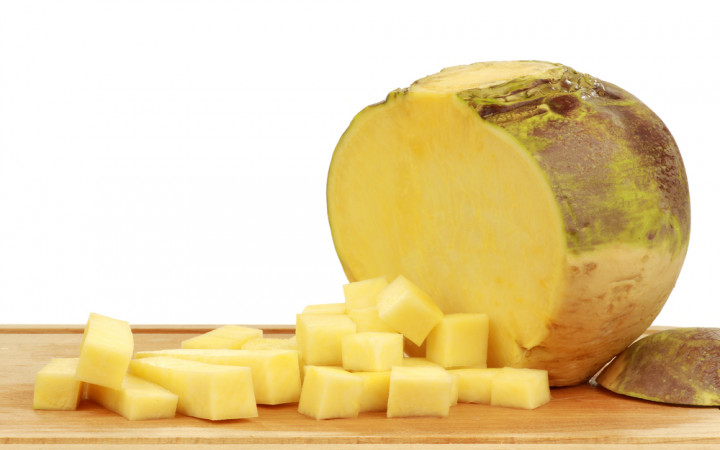Today’s Wonder of the Day was inspired by Kate from WI. Kate Wonders, “Why are fruits and vegetables good for you?” Thanks for WONDERing with us, Kate!
Do you love vegetables? Most kids like potatoes. Corn is another popular favorite. But what about broccoli, squash, and cucumbers? There is an incredible variety of vegetables out there just waiting to become your lunch or dinner!
For example, have you ever eaten a turnip? What about wild cabbage? Would you believe there's a vegetable that scientists believe developed from a combination of the turnip and wild cabbage? It's true! It's called the rutabaga.
Go ahead and say it a couple of times. We know you want to. Rutabaga! Rutabaga! Rutabaga! Wasn't that fun?
Historians believe rutabagas developed in Bohemia in the 17th century. In addition to being a food for humans, rutabagas were also a popular crop grown to feed livestock. Today, rutabagas grow best in cooler weather, such as the northern parts of the United States, Canada, and Europe.
In fact, rutabagas became particularly popular in the northern Scandinavian countries, especially Sweden. Throughout Europe, rutabagas are often called “swedes" even today.
Rutabagas are root vegetables that can be purple, white or yellow with yellow-orange flesh. Many people think they are yellow turnips! Their leaves are thick and blue, like cabbage. The flowers of the rutabaga plant are small and light-yellow in color.
Rutabagas have a light flavor that reminds many people of fresh cabbage and turnips. They're also a good source of healthy beta carotene. Despite these benefits, rutabagas are still fairly uncommon in American kitchens.
Rutabagas are easy to fix and can be used in many delicious recipes. They're usually planted in May or June and harvested in late summer or early fall. To get the tastiest rutabagas, look for them at a local farmer's market in early autumn.
If you're WONDERing how rutabagas are usually eaten, there are actually many great uses for the humble rutabaga. They can be eaten raw as a snack or chopped up and put into salads. They can also be cooked in a wide variety of ways, including roasting, boiling, steaming, stir frying, mashing, and stewing!




